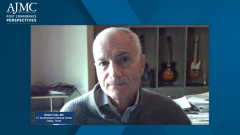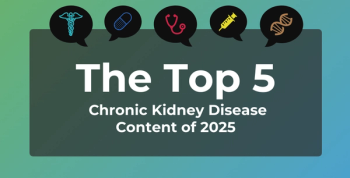
Analysis from DAPA-CKD: Time-to-Event and Cost Consequence
Robert Toto, MD, recaps another recent analysis of data from DAPA-CKD that looked at the time-to-event and cost consequence of delaying clinical events in chronic kidney disease (CKD).
Episodes in this series

Robert Toto, MD: Another study that was presented at the conference was looking at the impact of delayed disease progression and cardio event incidents associated with the use of dapagliflozin, again based upon this DAPA-CKD study that I alluded to before. For those interested in DAPA-CKD, the original trial was published in The New England Journal of Medicine in September of last year. The purpose of this study was to look at the time-to-event and cost consequence of delaying clinical events in a DAPA-CKD population. This particular study used a close cohort level, what’s called partitioned survival model. It’s a relatively complicated statistical analysis that is a model designed to give you projected benefits. This isn’t a measured substance but rather something that’s estimated based on assumptions that have to go into the model.
There are several assumptions that have to go into the model. For example, cost of the dialysis treatment, cost of hospitalizations for heart failure, and so on. What they did was they looked at the time horizon and the percentage of survival looking at various events as the survival, and the time frame was up to 4 years in the model. They compared dapagliflozin to placebo in terms of the time it took to reach those events. They examined specifically the time at which 50% of the dapagliflozin and 50% of the placebo reached an event, and that calculated the difference in time between those 2 at 50%. At about 2.4 years, 50% of the placebo group had achieved a combined end point. But it was 3.5 years, so more than a year delay in those randomized to dapagliflozin, to reach that 50% event rate. The events they examined included hospitalization for heart failure, which is as I mentioned is an important complication. They also looked at myocardial infarctions, stroke, and acute kidney injury. That was at an initial cost, and then they looked at a maintenance cost. A cost of continuing to provide care after hospitalization for heart failure, heart attack, stroke, kidney failure, dialysis, and a sustained reduction in estimated GFR [glomerular filtration rate].
The key finding they observed was that the time to event for hospitalization for heart failure, kidney failure, and all-cause mortality was considerably longer for those randomized to dapagliflozin versus the placebo. For example, if for heart failure the mean time to that event in the dapagliflozin was up to 50, and for those randomized to placebo it was 40, it’s clearly about 20% longer to reach an event of heart failure. Similarly, for ESRD [end-stage renal disease] it was about a 20% difference. The units here are in years. For example, in the placebo arm the mean time to kidney failure, heart failure, and all-cause mortality based on the prediction from the model was 20.2, 38.8, and 14 years, respectively. In contrast, the treatment with dapagliflozin was estimated to delay the mean time to each of these events by 6.6 years, that’s for kidney failure; 8.8 years for heart failure hospitalization; and 4.3 years for all-cause mortality.
Those are pretty important findings from a health care utilization standpoint, from a health care delivery standpoint, and from a quality-of-life standpoint, as well as cost of care, considering that dialysis is a very expensive procedure and hospitalization for heart failure is also an expensive cost from a health care delivery perspective. What they were able then to do was to calculate based on these findings from the model that predicted these differences in time to these events. They were able to calculate incremental cost savings associated with treatment with dapagliflozin compared to placebo. What they were able to show was that the dollars that could be saved are quite substantial.
For example, the estimated delays in event incidence at 3 years would be estimated to save $121 million per 10,000 treated patients. This is graphically displayed in the poster as the savings for each of the events for dapagliflozin and placebo. Then the incremental savings, which as I mentioned amounts to about $121 million dollars per 10,000 treated patients. That’s quite a substantial amount of money when you think about the number of patients with kidney disease who are progressing to end-stage kidney disease and who are being hospitalized for heart failure on a global basis. Certainly, this would vary country by country, but I think it has some global implications, not only because of the methodology they used here, but the DAPA-CKD study was a global study. Patients from continents all over the world were enrolled.
Transcript edited for clarity.
Newsletter
Stay ahead of policy, cost, and value—subscribe to AJMC for expert insights at the intersection of clinical care and health economics.








































